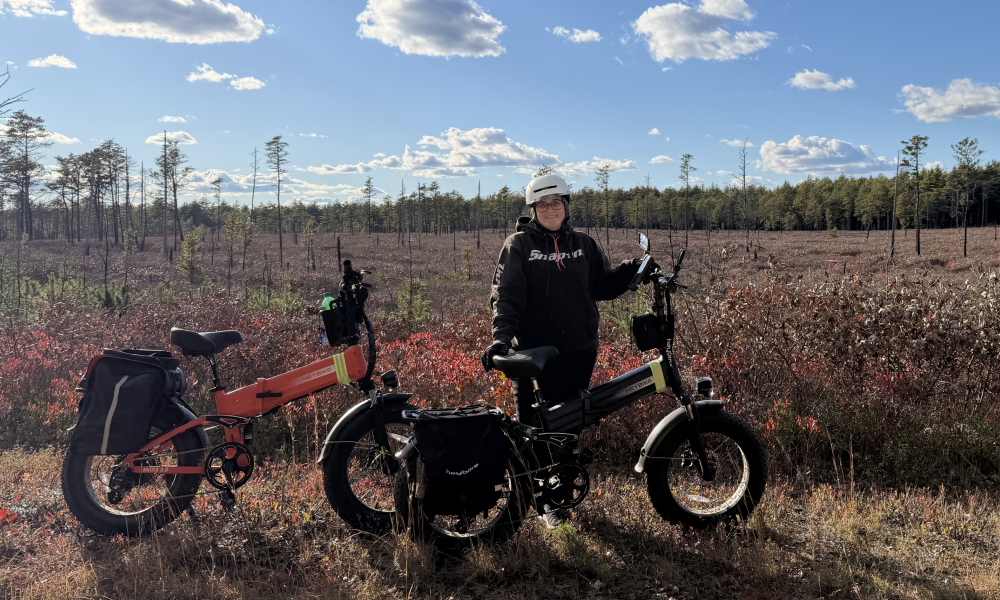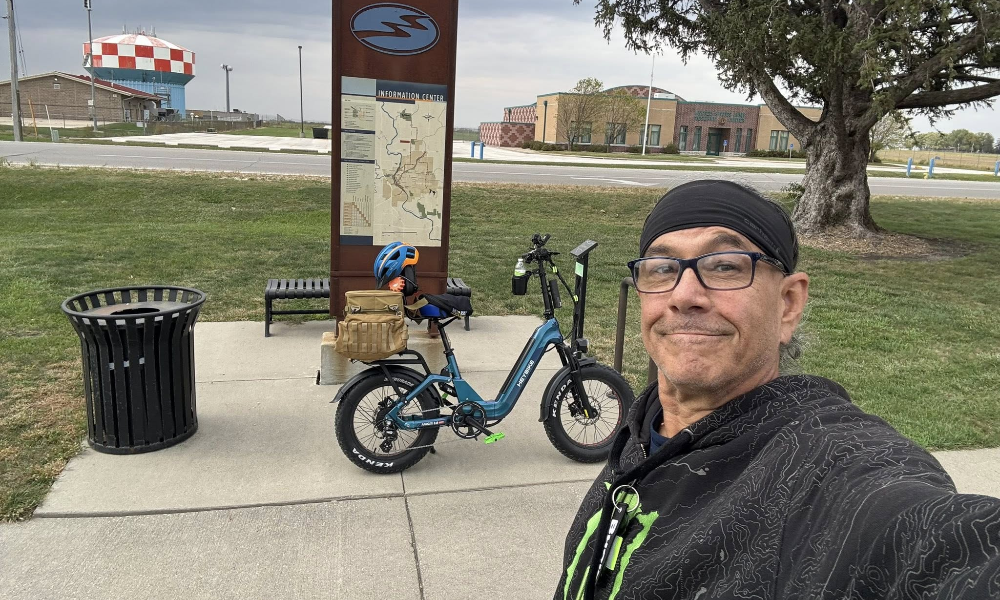What To Look For In Fat Bike Road Tires?
Width
Without wide tires, it cannot be a fat bike. The Fat Bike refers to any tire wider than 3.8 inches, with the majority falling between 4.0 and 5.0 inches. However, why are they so big? Since sand and snow are tricky and unstable terrain that fat bikes are built to navigate, the extra-wide tire makes the bike float rather than sink.
Tread Pattern
The location and use of the bike will determine the tread pattern you choose. Tires with smaller and narrower tread patterns roll quickly, making them more effective on longer rides but limiting grip. In challenging terrain, more aggressive tires cut the ground and produce grip, increasing traction when negotiating turns in mud or climbing up loose, slippery slopes. Before selecting your next tread design, you must evaluate your usual riding areas.
Weight
Fat bike tires can never be light due to their size, but paying close attention to the overall weight could improve your riding. While lightweight tires may roll easily and conserve energy over long distances, their reduced level of protection may lead to an increase in punctures.
Casing
More robust, thicker sidewalls give better defense against rock cuts and pinch flats, but if the tire is overly wide, the grip and general feel may be bike affected. Lighter casing tires typically weigh less, making it simpler to accelerate, but when used on rough terrain, they are more prone to ripping.
Tubeless
Switching to a tubeless setup can help you get the softest setup while keeping low tire pressure in mind. Tubeless tires are an incredible upgrade that can increase reliability because they do not get a pinch flat. Although tubeless compatibility for wheels and tires is required, aftermarket upgrade kits for fat bikes are becoming widely accessible.
Buying Guides For Fat Bike Road Tires
Price
Fat bike tires cost more than tires of a more conventional width. It is because they are still a newer, niche product. However, replacing your tires is a simple and inexpensive way to improve the way your bike feels compared to other upgrades.
Sizes
All of the fat bikes from the first generation had 26′′ wheelbases. Therefore, the 26-inch diameter is the most typical, while some new fat bike frames are starting to use the 27.5-inch fat wheelbase. Additionally, some fat e-bikes have shorter (20′′) wheelbases. The widest tire is economically feasible for 29′′ rims around 3 inches, which refers to a Plus-sized tire.
Air Pressure
Fat bike tires do not require the same high pressure as ordinary bike tires because of their enormous volume. Fat bike tire's air pressure impact performance and various suitable pressure for riding styles. With fat bikes, going as low as possible is, and 8-10 psi is the usual target.
For summer trail riding, a decent fat bike tire pressure should be between 11 and 16 PSI. The suspension and traction offered by this range are respectable, and the rim is kept from dents.
Reputable Manufacturers
Few fat tires are available from most major tire manufacturers, but some models stand out. A manufacturer of fat-specific tires with a focus on winter tires is 45NRTH. For severe weather, they have a selection of studded tires.
Another manufacturer specializing in fat tires is Terrene, which offers a wide range of widths and diameters. To go with their fat frames, Surly produces a good assortment of fat bike tires, and they were the first company to do so. Over the past few years, several other tire manufacturers have gradually increased their fat options. Teravail, Maxxis, and Vee offer High-quality fat/plus tires.
Tubes or Tubeless Tires
Tubeless and tubes can both be used with fat bike tires. Both have a few advantages.
Tubes tires pros
They are easier to maintain and make changing tires much simpler, plus they do not require any dirty cleanup. In general, using tubes is less expensive than installing tubeless tires. Because no liquid can freeze, tubes perform better than tubeless in cold temperatures.
Tubeless tires pros
You can use lower tire pressures that lower the risk of a flat and improves traction. Particularly in very wide diameters that call for enormous tubes, lighter than tubes. When there is a tiny puncture, tubeless tires will fix themselves spontaneously. You can quickly repair large holes without removing the tire from the rim.
Conclusion
A fun mode of transportation is a fat bike. The fat bikes offer good traction on uneven ground and enable sports enthusiasts to exercise effectively even when the ground is covered in snow. Riding a fat bike is sure to draw attention from friends and family since they are not common in some places.
Sports enthusiasts have earned the right to at least try on fat tire bikes if not buy them from the store because of their distinctive features. Fat tire bikes are the best option for the average biker who needs a bike for basic transportation requirements because they do not require much maintenance.
Latest Stories
3000 Miles of Pure Joy: Greg’s Story with the Heybike ALPHA | Heybike Community
At 68, Greg conquered 3000 miles on his Heybike ALPHA ebike through Minnesota's trails. Every ride brought him fun, fitness, and freedom!
Freedom on Two Wheels: Ryan's Thrilling Rides on Mars 3.0 | Heybike Community
Ryan Davis shares his riding story on Heybike Mars 3.0 ebike. Have a look at his all-terrain adventures to see how the Mars 3.0 brings him true freedom.
From Walker to Rider: Darrel Rediscovering Youth and Joy on Ranger 3.0 Pro | Heybike Community
At 59, Darrel Abbe found youth and joy again riding the Heybike Ranger 3.0 Pro electric bike with his wife. Explore their story and the thrill of e-biking.



Share:
How to Choose the Right E-Bike Headlights
About Electric Bike Suspension